259 years ago today, former Virginia governor and revolutionary Patrick Henry was not only born, but used his 29th birthday as an occasion to deliver a rousing speech is response to the British Parliament passing the Stamp Act. In response, Henry introduced the Stamp Act Resolves to the House of Burgesses in Virgina. Though his speech is only quoted today from recollections decades later by men not present, the general conensus is that at a certain point, Henry suggested that King George III be killed, to which a cry rang out “Treason!” Henry is supposed to have said “If this be treason, make the most of it!” READ about the Stamp Act and Henry’s life in general… (1739, 1765)
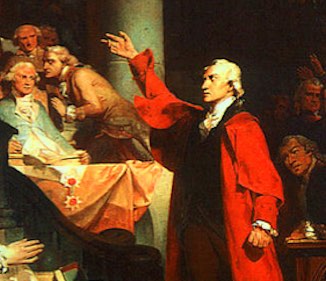
Born in Hanover County Virginia, Patrick Henry’s father was John Henry, an immigrant from Aberdeenshire, Scotland who had been educated at University College, and so insisted that not only Patrick be educated, but assisted in the teaching himself. By 1760, Henry had become a lawyer by self-study, and after distinguishing himself in the Parson’s Cause against the Anglican Clergy, he won a seat on the proto-parliament of the Virginia colony, known then as the House of Burgesses.
One of the first confirmed accounts of Henry viewing the King as a tyrant was in the wake of his victory in the Parson’s Cause, where, due to a lack of hard currency, the House of Burgesses had passed the Two Penny Act that allowed debts and salaries to be paid either in two pounds of tobacco, or the two pence standard price for two pounds of tobacco. The Anglican Church petitioned the Crown to overule the law, which it did.
Henry argued in court in 1763 of the unconstitutionality of the veto of the Two Penny Act by the king’s government. Henry deemed any king who annulled good laws such as the Two Penny Act, as a “tyrant” who “forfeits all right to his subjects’ obedience.”
Similar language was on display when, two years later, arguing against a tax imposed on the colonies that required any material to be printed on paper be made in London and carry an embossed revenue stamp, Henry is supposed to have said, “Caesar had his Brutus, Charles I his Cromwell, and George III…” at which point he was interrupted by suggesting George III should be assassinated by calls of “treason!” which is when he delivered the rebuttle: “If this be treason, make the most of it!”
His Stamp Act Resolves were adopted. They included four points, the fifth was later annulled, that reinforced the colonists’ beliefs that they enjoyed the same rights as Englishmen, and that the only people to whom they should be subject to taxation were their representatives.
MORE Good News on this Day in History:
- Igor Stravinsky’s ballet score The Rite of Spring premiered in Paris (1913)
- Crosby, Stills & Nash released their debut album which spawned two Top 40 hits: ‘Marrakesh Express‘ and ‘Suite: Judy Blue Eyes‘ (1969)
- Pope John Paul II visited Canterbury Cathedral — the first pontiff ever to do so (1982)
- First elected and civilian head of state in Nigeria took office after 16 years of military rule (1999)
- NASA’s Space Shuttle Discovery completed the first docking with the International Space Station—remaining for more than a week, loading and unloading supplies, personnel, and trash to make the ISS even more versatile (1999)
- The U.S. Supreme Court ruled that disabled golfer Casey Martin be given the right to use a cart for riding in tournaments (2001)
71 years ago today, New Zealander Edmund Hillary, and Nepalese Sherpa Tenzing Norgay, became the first to reach the summit of Mount Everest. The Kiwi was part of the ninth expedition to summit Everest sponsored by the British Empire. No climber has ever got to the top without the help of the Sherpa people, a fact which many point out. Hillary went many steps further, and even after achieving instant celebrity, he devoted himself to assisting the Sherpa people of Nepal through the Himalayan Trust, which he established. His efforts are credited with the construction of many schools and hospitals in Nepal.
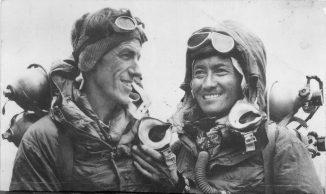
The expedition party was enormous, and consisted of over 400 people, including 362 porters, 20 Sherpa guides, and 10,000 pounds (4,500 kg) of baggage. Cameraman Tom Stobart was Hillary’s room-mate in Kathmandu. He described Hillary as “a skeleton as tall as I was… a hatchet-thin face, and seemed tied together with steel”.
“I noticed a crack between the rock and the snow sticking to the East Face,” Hillary wrote. “I crawled inside and wriggled and jammed my way to the top… Tenzing slowly joined me and we moved on. I chopped steps over bump after bump, wondering a little desperately where the top could be. Then I saw the ridge ahead dropped away to the north and above me on the right was a rounded snow dome. A few more whacks with my ice-axe and Tenzing and I stood on top of Everest.”
Tenzing Norgay became a national hero, receiving awards from both Nepal and India. While Hillary was immediately knighted, Norgay’s lack of citizenship meant he was given the George Medal for exceptional gallantry absent a military enemy. Speaking several languages, Norgay became the first Director of Field Training of the Himalayan Mountaineering Institute in Darjeeling, when it was set up in 1954. He got permission from the King of Bhutan to serve as a guide for the first American tourist party allowed into the country. Both a peak above 25,000 feet and the largest mountain range on Pluto, are named after the legendary Sherpa. (1953)
173 years ago today, Sojourner Truth delivered her famous extemporaneous speech in Akron, Ohio, at one of the first Black Women’s Rights Conventions. Born into slavery in Swartekill, New York, her speech, later known as ‘Ain’t I A Woman?’, demanded equal human rights for all women.
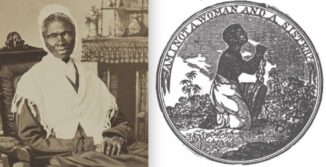
Though there is no transcription of Truth’s speech, but she combined calls for the abolition of slavery with women’s rights, drawing from her strength as a laborer to make her equal rights claims.
A version was published a month later in the Anti-Slavery Bugle by Rev. Marius Robinson, a newspaper editor who was in the audience. Robinson’s recounting of the speech included no instance of the question ‘Ain’t I a Woman?’—nor did any other newspaper reporting on the event at the time. Later versions were written that incorporated a speech pattern characteristic of Southern slaves. READ an excerpt and learn more about Isabella Baumfree, who gave herself the name Sojourner Truth after she became convinced that God had called her to leave the city and go testify “the hope that was in her”…. (1851)
Robinson recalled her saying in Akron:
“I want to say a few words about this matter. I am a woman’s rights. [sic] I have as much muscle as any man, and can do as much work as any man. I have plowed and reaped and husked and chopped and mowed, and can any man do more than that? I have heard much about the sexes being equal. I can carry as much as any man, and can eat as much too. . . As for intellect, all I can say is, if a woman have a pint, and a man a quart – why can’t she have her little pint full? You need not be afraid to give us our rights for fear we will take too much, – for we can’t take more than our pint’ll hold.
“The poor men seems to be all in confusion, and don’t know what to do. . . But the women are coming up blessed be God and a few of the men are coming up with them. But man is in a tight place, the poor slave is on him, woman is coming on him, he is surely between a hawk and a buzzard.”
Over the next 10 years, Truth spoke before dozens, perhaps hundreds, of audiences. From 1851 to 1853, Truth worked with the editor Robinson, and traveled around that state speaking. In 1853, she spoke at a suffragist “mob convention” in New York City; that year she also met Harriet Beecher Stowe.
A quarter century before she gave her famous address, Truth escaped slavery with her infant daughter to freedom. After going to court to recover her son in 1828, she became the first black woman to win such a case against a white man.
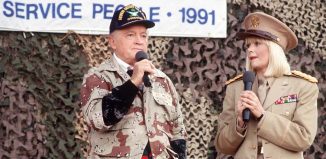
Also on this day, in 1903, Bob Hope was born in a neighborhood near London. The stand-up comedian and actor built a career in America that spanned nearly 80 years, with appearances in more than 54 feature films (often with side-kick Bing Crosby). In addition to hosting the Academy Awards a record 19 times, he was beloved for his USO shows that entertained American military troops—a remarkable 57 tours overseas between WWII in 1941 and Vietnam in 1991. He lived to be 100 years old, with the song “Thanks for the Memory” as his signature tune.
Today is the International Day of UN Peacekeepers when nations around the world honor a special kind of soldier—one that sets out to establish order and make peace.

Since its founding 75 years ago, more than 1 million UN peacekeepers in blue hats have undertaken 72 field missions, negotiated more than 172 peaceful settlements to end regional conflicts, and enabled people in more than 45 countries to participate in free and fair elections. More than 3,900 peacekeepers have lost their lives serving the cause of peace under the UN flag.
Women peacekeepers make invaluable contributions because they have greater access to communities. And, while they have women’s ears, they encourage them to become a meaningful part of local politics.
Today, UN Peacekeeping deploys more than 95,000 military, police, and civilian personnel in 13 operations located in some of the most conflict-ridden and austere locations in the world. To mark the occasion at the UN Headquarters in New York, the Secretary-General will lay a wreath in honor of all peacekeepers who have lost their lives over the past seven decades. And the Dag Hammarskjold Medal is awarded posthumously to peacekeepers who have died. (1948)
SHARE the Milestones, Memories, and Music…


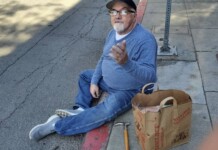

















[…] On this day, nations around the world honor a special kind of soldier. Not the kind that sets out to conquer or kill an enemy, but one that sets out …read more […]
[…] Read the full story at https://www.goodnewsnetwork.org […]